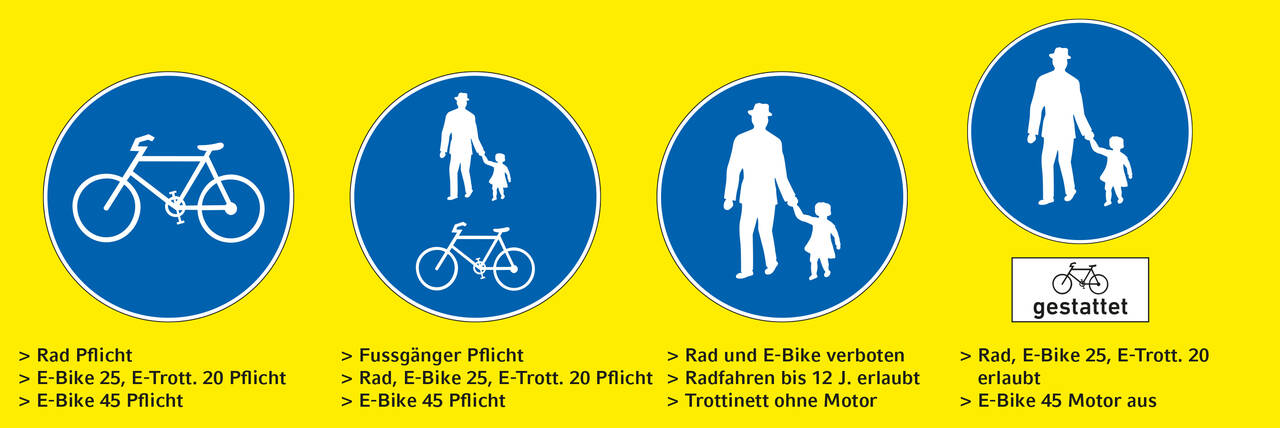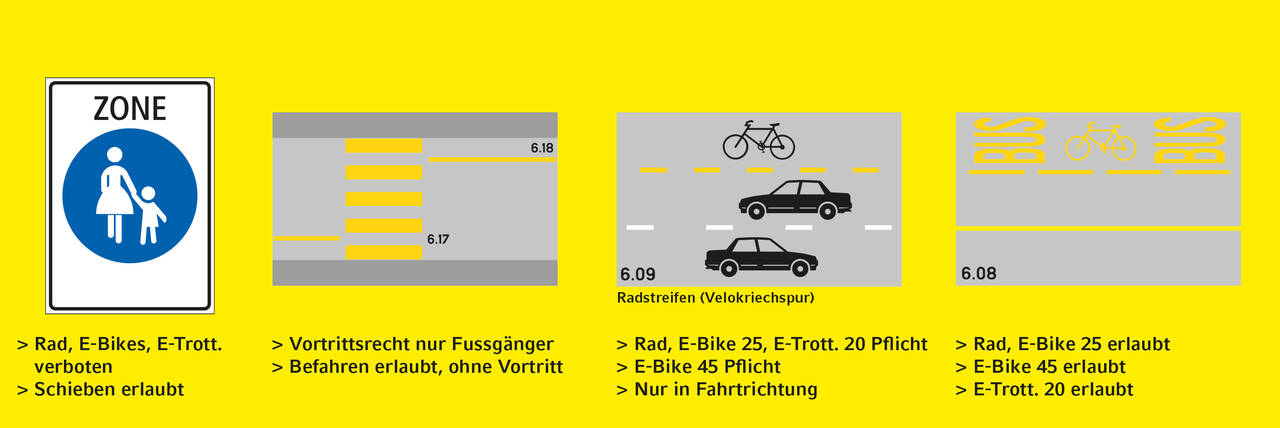Information for cyclists
Bike path signalization along main roads was adapted and standardized nationwide
In recent years, e-bikes with pedal assistance up to 25 km/h (defined in the Road Traffic Act as light motorcycles) and e-bikes with pedal assistance up to 45 km/h (defined in the Road Traffic Act as motorcycles with registration) have become established in traffic in addition to classic bicycles. In addition, the signalization of bicycle lanes has evolved historically. For users of bicycles and e-bikes, it is therefore not always clear today which roads and paths they may or must use or which signaling is relevant for the respective means of transport.
For this reason, the Office of Civil Engineering and Geoinformation has reviewed the signalization of bike paths in Liechtenstein in recent months and subsequently made selective adjustments to the signalization. The cycle path signalization could thus be standardized nationwide.
In addition to bicycles and e-bikes, there are now various vehicles, some of which are electrically powered, such as e-scooters. These also use the bicycle infrastructure. In order to provide clarity as to who may, or must, ride where, the Office of Civil Engineering and Geoinformation has prepared information sheets together with the Liechtenstein Traffic Club.
Background information (the most important legal provisions at a glance):
- Bicyclists of any type (classic bicycle as well as e-bikes with pedal assistance up to 25 or 45 km/h) are obliged by the Road Traffic Act to use bike paths, routes signalized as pedestrian and bicycle paths, as well as bicycle lanes.
- The sidewalk is reserved for pedestrian traffic and vehicle-like devices (eg inline skates, skateboards, scooter without motor).
- For children under 12 years, cycling is allowed on sidewalks, provided that there is no bike lane. The driving style and speed must be adjusted accordingly, as pedestrians still have the right of way.
- If an additional sign "Cyclists allowed" is signaled on a sidewalk, users of bicycles and e-bikes with a pedal assistance up to 25 km/h can decide whether they want to use the roadway or the sidewalk. E-bikes with pedal assistance up to 45 km/h are not allowed to use the sidewalk even with an additional sign "cyclists allowed". This is to prevent that the speed levels become too different.
- For bike lanes, a right-hand drive requirement applies, whereby the bike lanes may only be used in the direction of travel of the main carriageway. This also applies to the slow line for bykes, which must be used by the uphill cyclist.
- A driving on the pedestrian crossing is allowed with the bike and the e-bikes, but without right of way. However, dismount and push the byke helps to have the right of way as well as pedestrian traffic. Some crossing points for bicycles are designed as so-called "bicycle fords" with lowered curbs and center islands for better navigability. Here, too, bicycles have no right of way.
- E-scooter with design speed 20 km/h are equal to the e-bikes with a pedal assist up to 25 km/h (light motorcycles).
For more information on signalization of bicycle facilities, see the brochure from the State Police.

